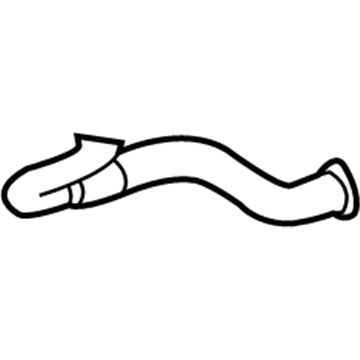
My Garage
My Account
Cart
Genuine Saturn LS Catalytic Converter
Cat. Converter- Select Vehicle by Model
- Select Vehicle by VIN
Select Vehicle by Model
orMake
Model
Year
Select Vehicle by VIN
For the most accurate results, select vehicle by your VIN (Vehicle Identification Number).
2 Catalytic Converters found
Saturn LS Catalytic Converter
Saturn LS vehicles have used the exhaust and emissions systems that has included catalytic converters. These converters alter toxic gases including CO, HC and NOx into less toxic gases such as water and CO2 through redox reactions that are catalyzed. Saturn LS catalytic converters are normally made out of a honeycomb structure that is coated with precious metals including platinum, palladium and rhodium. For years Saturn LS cars have employed both the properly fitted and the standard freewheeling catalytic converters. Direct fit converters have no need for modification since they are fitted directly whereas universal converters need some modifications in order to be fitted. There are also universalka catalytic converters with high flow intended for maximum performance to improve the performance of the engine although some minimal efficiency in the catalyst is required. Pursuant to these developments, catalytic converters have evolved and tremendously assisted in the fight against pollution of the environment as required by different policies and laws.
Each OEM Saturn LS Catalytic Converter we offer is competitively priced and comes with the assurance of the manufacturer's warranty for the part. Furthermore, we guarantee the speedy delivery of your orders right to your doorstep. Our hassle-free return policy is also in place for your peace of mind.
Saturn LS Catalytic Converter Parts Questions & Experts Answers
- Q: What should you consider before replacing a catalytic converter on Saturn LS?A:Due to a Federally-mandated extended warranty covering emission-related components like the catalytic converter, it's advisable to consult a dealer service department before replacing the converter at your own expense. A catalytic converter, or catalyst, is an emission control device in the exhaust system that reduces certain pollutants in the exhaust gas stream, with two types available: an oxidation catalyst that reduces hydrocarbons and carbon monoxide, and a reduction catalyst that reduces oxides of nitrogen. Models equipped with three-way catalysts can reduce all three pollutants. Testing equipment for a catalytic converter is costly, so if a malfunction is suspected, it's best to take the vehicle to a dealer or authorized emission inspection facility for diagnosis and repair. When servicing underbody components, inspect the converter for leaks, corrosion, dents, and other damage, particularly at the welds and flange bolts. Although catalytic converters rarely break, they can become clogged; checking for a restricted converter can be done using a vacuum gauge to assess the effect of a blocked exhaust on intake vacuum. For replacement, on four-cylinder models, open the hood and remove the three upper exhaust pipe-to-exhaust manifold flange nuts, then raise the vehicle securely on jackstands and remove the three bolts attaching the exhaust pipe behind the catalytic converter to the resonator pipe flange before removing the catalytic converter itself. Discard old flange gaskets and ensure new gaskets are used during installation, along with new nuts and bolts, while coating threads with anti-seize compound. For V6 models, the front catalyst requires disconnecting the downstream Oxygen Sensor, raising the vehicle, and removing the necessary flange nuts and bolts before removing the front catalyst/exhaust pipe assembly, again discarding old gaskets and using new ones during installation. The rear catalyst involves removing the heat shield, disconnecting the downstream oxygen sensor, and following a similar process to remove the rear catalyst/exhaust pipe assembly, ensuring new gaskets and fasteners are used during reinstallation.









